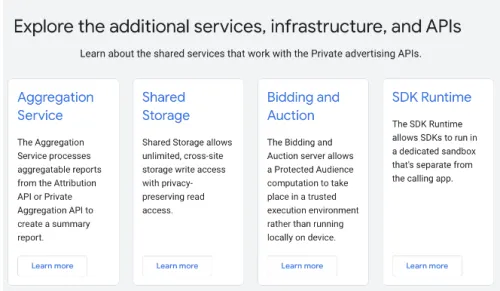At the end of April, Google announced that it would pause testing the termination of third-party cookies in Chrome. The tests were run on 1% of Chrome users, and the goal was to phase this out completely by the end of the third quarter of 2024. Google has indicated that this will be postponed by a quarter.
Update: On July 23, 2024, Google announced that they will not fully phase out third-party cookies. Instead, they will give users the chance to make an 'informed choice' about the use of cookies while introducing new methods to protect privacy and improve the online advertising experience.

(Source: Google)
Why is the matter being postponed? What lies beneath the headlines and official statements?
Reasons for Delay
Concerns of Media Sellers
Media sellers fear that changes in cookie policy will negatively impact their revenue by reducing the ability to sell targeted ads and generate first-party data. These concerns have led Google to need extra time to find a balance between privacy and advertising revenue.
Concerns of Media Buyers
On the other hand, media buyers are concerned that their current working methods, ranging from targeting to measurement, will be restricted, limiting the ability to execute optimal digital campaigns, which in turn impacts their revenue.
Concerns of Ad Tech Experts
Ad Tech experts fear that certain aspects of these proposals will further strengthen Google's market dominance, for example by requiring Google Ad Manager to be the "Top Level Seller," thereby controlling the Protected Audiences (PA) ad auction. Additionally, there are concerns at the UK's Information Commissioner's Office (ICO) about the Privacy Sandbox initiatives. They believe that the proposals do not yet sufficiently protect privacy.
This development gives companies extra time to prepare for these inevitable changes in the digital marketing world. What exactly is this Sandbox, and how are other parties dealing with it?
What is Google's Privacy Sandbox?
Google Privacy Sandbox is an initiative by Google to improve user privacy, particularly in the context of online advertising. The goal is to provide alternative methods for tracking user behavior and targeting ads while still allowing advertisers to reach audiences and deliver relevant ads.
Main Technologies within the Privacy Sandbox
Federated Learning of Cohorts (FLoC) uses an important aspect within the use of privacy-friendly technologies, such as federated learning of cohorts (FLoC), which places users in groups with similar behavior instead of tracking them individually. This should help protect the privacy of individual users, as their specific browsing behavior is no longer tracked.

Protected Audience API allows retargeting using first-party data without third-party cookies.
Attribution Reporting is an innovation to be a solution for measuring ad interactions without using third-party cookies.
Private Aggregation uses various APIs to synchronize combined data reports.
When a user lands on a site that uses the Topics API , this API shares three random interest areas with the site. (Source: Google)
This allows the site to offer personalized content, including the ability to personalize ads on a first-party basis. Additionally, there are several other APIs in development that support the core APIs.
Impact and Outlook
The delay gives companies extra time to prepare for these inevitable changes in the digital marketing world. It is, of course, still a question of whether a quarter will be enough time for Google to resolve all uncertainties. Although the timeline raises many questions and uncertainties, it is not a question of whether third-party cookies will disappear, but rather when and which solutions will play the main roles in the market.
Solutions will not only come from Google and other browsers, but various other parties are also not standing still when it comes to cookieless innovation and optimizing the use of first-party data in different applications.
Preparing for Change
As a marketer, it is important not to wait entirely for Google and other parties, but to also apply new methods alongside your current marketing activities to be ready for the moment when third-party cookies truly disappear. The more insights you can gather in advance, the easier the transition to a cookie-less world will ultimately be!
The update on Tuesday, July 23, 2024, from Google suggests that they are fully stepping away from the previously established plan. However, simply stepping away from the decision to phase out third-party cookies is not possible. Vice President Anthony Chavez of the Privacy Sandbox emphasizes that the Sandbox remains crucial in improving online privacy while allowing the internet to continue relying on ads. The delay in phasing out third-party cookies by Google gives the industry some extra breathing room, but it is essential to remain proactive. By taking steps towards alternative solutions now, companies can be better prepared for the inevitable changes in the digital marketing world.




